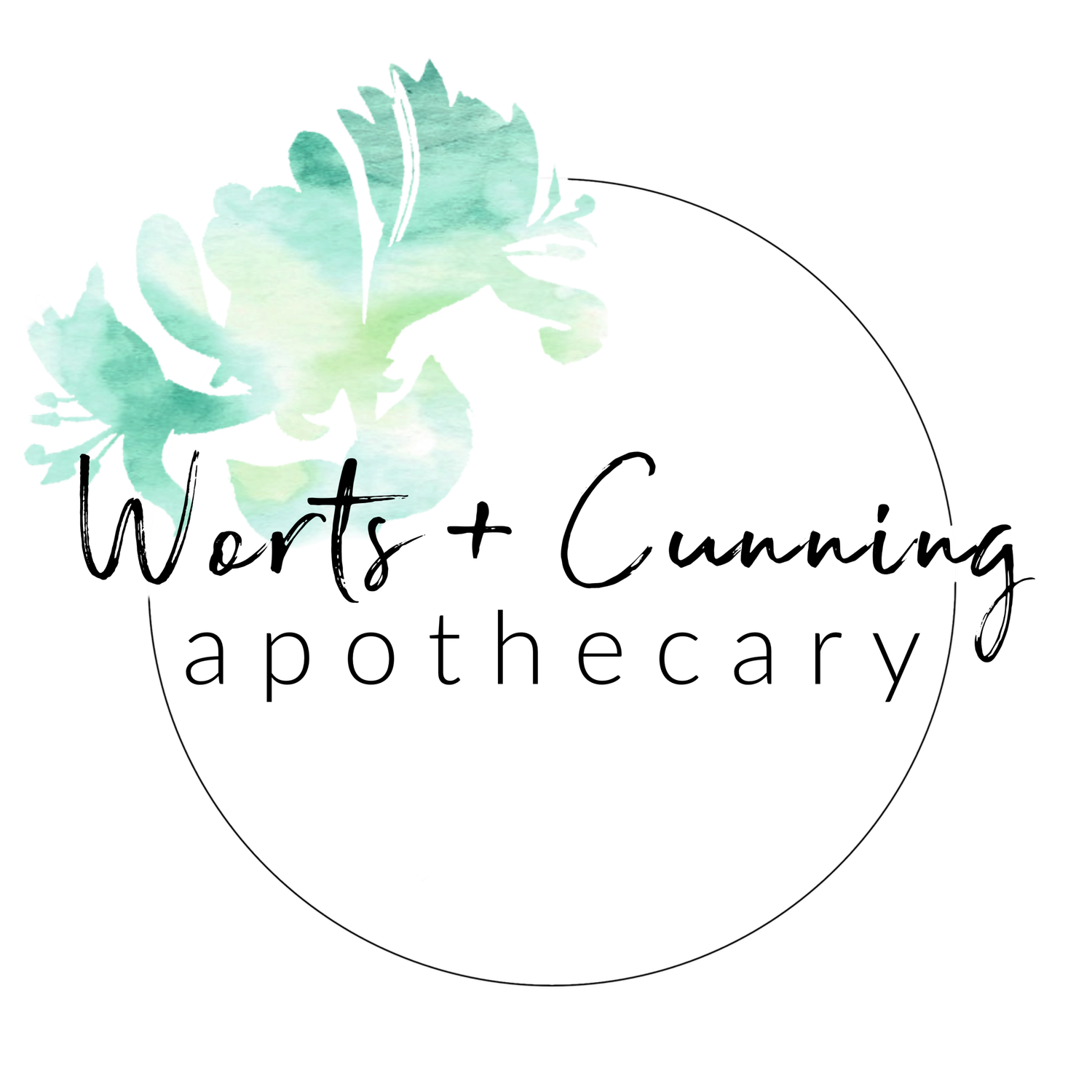How To Make Herbal Oils - Warm Infusion Folk Method

The infusion of herbs in an oil-based menstruum is a wonderful way of using herbs medicinally and can be a base for further medicine-making adventures including salves, lotions, and creams. We'll be using a warm infusion folk method of creating a herbal oil which more or less means that exact measurements are not used and we're not looking for an exact herb-to-oil ratio (it is all very hang-loose in the Apothecary today!). We'll also be gently warming our oil as part of the infusion process, so it is important to set aside time that you'll be able to be home and checking in on your herbal oil potion throughout the day.
Let's start with the foundation of our Herbal Oil - the Oil Menstruum.
One of the most common oils used the home apothecary is olive oil. Find a nice cold-pressed, extra virgin olive oil that is lighter on the scent scale and you're off to a very good start. You can also use oils like Almond, Sesame, Castor, Coconut, and Jojoba (though Jojoba is actually a liquid wax which is why is has such a long shelf life). I am using Coconut oil for our tutorial because I wanted to use Coconut's sweet scent in my final oil.
Next, choose which herb or herbs you want to infuse. For our tutorial I infused Coconut oil with fresh Sage (Salvia officinalis) and Eucalyptus (Eucalyptus globulus) from our neighborhood greenery. Check out our Plant Profiles (as well as your gardens and kitchen cupboards) for more inspiration on what herbs to use. I used fresh herbs which require more vigilance to help prevent rancidity from the water content that is extracted when using herbs fresh, but dried herbs are just as useful and you have less risk of spoilage!
Finely powder dried herbs and let fresh herbs wilt (to reduce moisture content) and then chop them up. Mix your herbs with your chosen oil, so that there is about 1/4 oil resting above the herb material. If you are using coconut oil, you'll have to gently warm the oil so that it becomes liquid and then you'll mix in your plant materials. When using dried herbs you'll have to check an hour or two into the infusion to see if you need to add more oil as dried herbs will expand and absorb the oil.
Next we'll be creating a lovely warm bath for your oils to gently relax in, loosening up their medicinal properties into the oil. One of the easiest methods is to place your jar into a warm pot of water, cover that with some thick towels or a tea cosy and let it sit. You'll have to change the water a few times or pop it back on the stove to warm it up, but mostly you want to keep your oil warm, but not hot - you should be able to comfortably touch the oil with your bare fingers. You can also put your herbal oil mixture into a double boiler and keep it on the stove at a very low heat, checking often to make sure you don't get the mixture too hot.
After a day of brewing (about 8 - 10 hours), you'll be ready to strain your oil for the first time. Use cheesecloth, a nutmilk bag or a jelly strainer bag to strain your oil, removing most of the plant material. Let your oil settle for a few days, allowing the sediment to float to the bottom, and then strain it again, being especially careful to filter out all excess particles if you have used fresh plant material. If you used fresh plant material you may have to repeat this process in a few more days.
Finally, bottle your lovely oil in a preferably dark container, such as an amber bottle, and store in a cool dark place. Herbal oils are sensitive to light and heat, so to preserve their shelf life store them properly, clever ones. At this point if I am not using my herbal oil as a base for a salve or cream, I might add in essential oils and a drop or two of Vitamin E oil as a natural preservative. My Sage and Eucalyptus oil has became a lovely body oil for achey backs and joints (recipe below).
In addition to all of these steps I feel that it is very useful to sing to your oil while it is brewing or perhaps talk about all of the wonderful qualities it has. Being mindful and properly appreciative of the gifts of our green allies is what brings that extra edge of enchantment to your remedies!
SAGE + EUCALYPTUS HERBAL OIL for Aches + Pains These are rough measurements meant to guide, not constrain, my clever folks!
- 3 parts Sage (Salvia officinalis)
- 1 part Eucalyptus (Eucalyptus globulus)
- Coconut Oil
Per 8 ounces of oil add in the following essential oils:
- 3 drops Sage (Salvia officinalis)
- 1 drop Eucalyptus (Eucalyptus globulus)
- 2 drops of Lavender (Lavandula officinalis)
You can also add in a few drops of Vitamin E oil (or the contents of 1 Vitamin E capsule) to your oil for further preservative powers!





